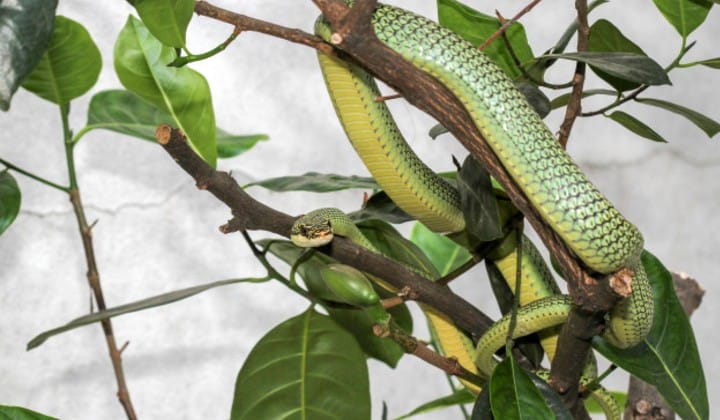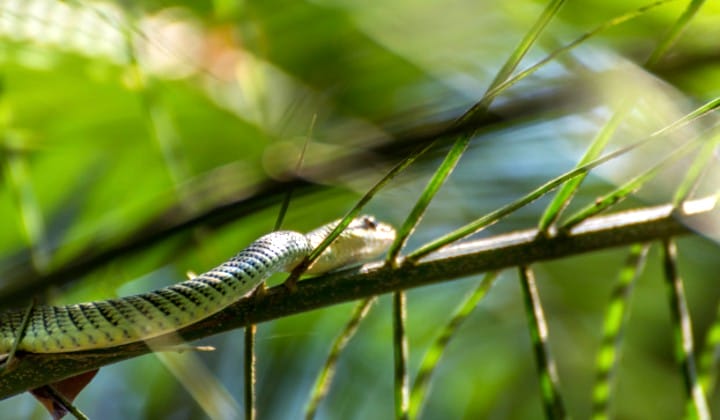SEA’s Flying Tree Snakes Can Help Create Future Flying Robot Snakes

Subscribe to our new Telegram channel for the latest updates on Covid-19 and other issues.
In case you didn’t know, Malaysia has snakes. We have giant pythons, which are pretty well known, but we also have flying Paradise tree snakes (Chrysopelea paradisi) that literally launch themselves into the air. If you live near a forest, this is also how sometimes these snakes end up on your second-storey balcony. Or the roof.
Snakes are not the kind of animal that comes to mind when you think of flying, or gliding. For one thing, snakes have no limbs, wings, or any kind of biological evolution that helps them stay in air.
But they can cover a horizontal distance of about 100 meters in a single glide from the top of a tree. That’s no easy feat!
A new study conducted by a team of researchers at Virginia Tech bring us one step closer to understanding how these snakes actually do it.

(Credit: Freepik)
Their research showed that the snakes’ lateral undulation was crucial for controlled gliding at a much further distance as opposed to merely considered a “behavioral remnant” from being a snake.
Lateral undulation is the smooth movement side-to-side, like the way snakes move when on ground, in water, or up a tree. It turns out that they do the same in the air, and it’s actually one of the key reasons why they can glide such distances in the air.
The research team set out to prove it via their experiments with models of differing geometric shapes. Glides simulated that included undulation performed better than those simulated without.

(Credit: Freepik)
In fact, simulations that didn’t include undulation were prone to plummeting and tumbling to the ground. (Thanks, gravity.)
The authors of the study concluded that this research can improve technology in broadly stable gliding without the need for highly specialized stability and control surfaces (like birds). As such, the potential implementation in robotic flying snakes offer exciting avenues to explore.
So perhaps in the future, you’ll get more than just a snake on your balcony. You might get a robotic flying snake instead.
Share your thoughts with us on TRP’s Facebook, Twitter, and Instagram.
Anne is an advocate of sustainable living and the circular economy, and has managed to mum-nag the team into using reusable containers to tapau food. She is also a proud parent of 4 cats and 1 rabbit.




